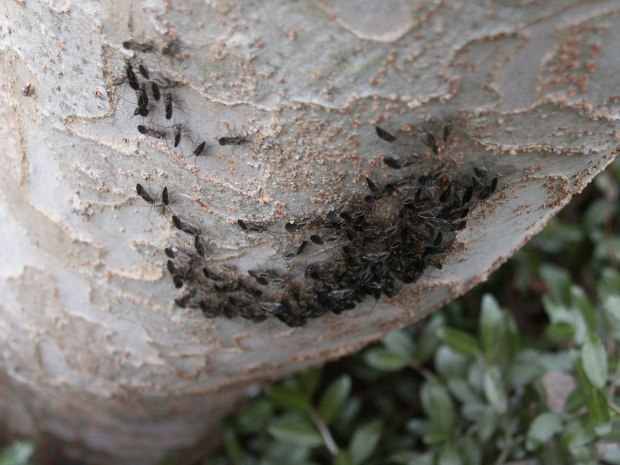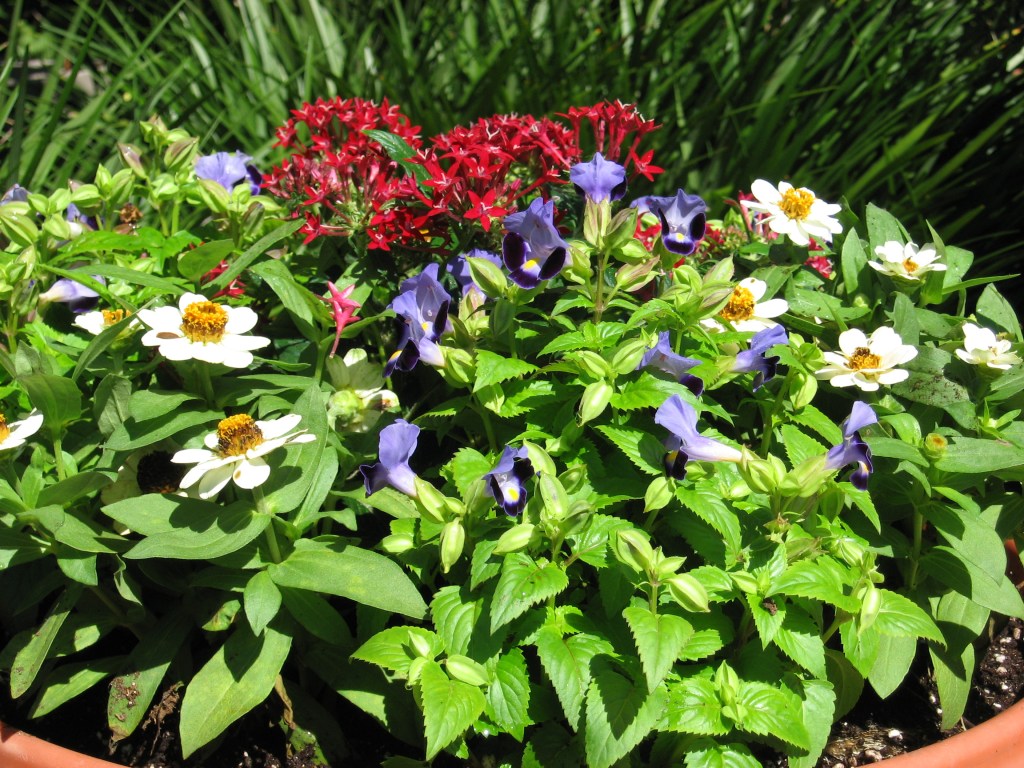Question: I would like to plant several containers with colorful flowers for summer. Any suggestions?
Answer: Why not go red, white and blue for the patriotic holiday arriving in only a few weeks. May I suggest a mixture of dwarf red pentas, low-growing white flowered zinnias and blue spreading torenia. If you get it started now all should be in full bloom by the Fourth of July. Fill the containers with fresh soil and add a slow-release fertilizer after planting. Keep moist and in a sunny location for a display that should last through summer.
Q. Small white flies are hovering around my blue daze plants. Are they causing any harm?
Plant Doctor: Wax begonias thrive in moist summer heat but don’t water them too much
A. What you are seeing may be a pretty good infestation of whiteflies. This is the common name of these insects related to aphids, scales and mealybugs. Populations of whiteflies are up to no good sucking juices from leaves and stems of your blue daze plants. If left uncontrolled the plants most likely are going to decline. By now you may also notice the sooty mold fungus, growing on the excreta of whiteflies, producing a black coating on some of the plants. Controls can include application of natural insecticides including horticulture oils and insecticidal soaps. You have to hit the underside of the leaves and stems to be effective. Also, systemic insecticides may offer better control as they are taken into the plants and affect the whitefly as it feeds. None of these insecticides control the winged and flying adults. You might try to trap them on yellow sticky boards. Follow all label instructions when applying insecticides.
Q. Companies are stopping by and want to trim my palms. Can palms be trimmed at this time of the year?
A. Palms can be trimmed at anytime of the year but not too harshly. Many wait until lots of dead or declining fronds accumulate and then have only these removed. Leave as many green fronds as possible to produce nutrients palms used for growth and to maintain their vigor. As a general rule prune palms to sort of resembling the 9-to-3 face of a clock. Leave all fronds within the 9-to-3 space. Residents can leave all the green fronds they wish. Just avoid leaving only a few fronds that many call a rocket cut.
Q. I am a bit behind in planting my spring garden. Is it too late to plant okra seeds?
A. Spring through summer is okra planting time. This crop seems to love the heat and from seed to harvest can occur in about 60 days at this time of the year. Here is the only problem with okra plantings — they are nematode bait. These microscopic round worms, often found in garden sites, cause root damage and there is no reliable control. Try to find a spot for new okra plantings where root knot nematodes have not affected previous crops. Then add lots of organic matter that seems to help reduce nematode activity. Other crops that won’t mind the summer heat and humidity include cherry tomatoes, southern peas, chayote squash, calabaza squash and sweet potatoes.
June in the Garden for Central Florida
Q. I have azaleas several feet tall and wide. Is it necessary to prune the plants?
A. After three to four years of good growth azaleas become larger than desired and fill with older stems. Often these stems start to decline, which can result in crown rot and death of the plants. Immediately after flowering and by early June is a good time to give your plants a renewal pruning. Rejuvenate your azaleas by first cutting them back a foot or two below the desired height and width. Sometimes this is a few feet from the ground. Also, remove very old or declining stems back to healthy trunks or to the ground. After a fertilizer application, where permitted, and with adequate moisture your plants should begin good growth and be attractive by fall. The more severe the pruning the longer it takes azaleas to come into bloom. So expect some plants to need over a year to be in full bloom during late winter or spring.
Q. Clusters of small insects are forming on the trunk of my crape myrtles. Do they hurt the tall shrubs that are starting to flower and what should I do?
 They might look threatening but the insects herding on the trunks of your crape myrtles are psocids, also known as tree cattle and bark lice, that cause no harm. (Courtesy of Tom MacCubbin)
They might look threatening but the insects herding on the trunks of your crape myrtles are psocids, also known as tree cattle and bark lice, that cause no harm. (Courtesy of Tom MacCubbin)
A. Perhaps they look threatening but the insects herding about on the trunks of your crape myrtles are psocids also known as tree cattle and bark lice that cause no harm. Actually, the insects are beneficial cleaning the trunks and limbs by feeding on moss, lichens, algae and similar growths. Sometimes they create webs felt to be protection from predators. There is no need to disturb or remove these insects. If too much of an annoyance, they can be washed off with a strong stream of water.
Q. Many colorful pentas are growing in my landscape. How can I start more to grow this summer?
A. Start as many new plants as you need by rooting 4- to 6-inch tip cuttings. Pentas root easily in trays or pots of coarse vermiculite available at many garden centers. You may also want to obtain rooting powder to dust the cut ends of the cuttings when they are inserted into the containers of moistened vermiculite. Set the containers of cuttings in a shady site and surround them with clear plastic. Bring the plastic up a foot or more over the top of the cuttings. Then each day, mist the cuttings with water in the morning and afternoon. Most pentas root in six to eight weeks and are then ready to grow a few weeks longer in containers of potting soil before adding them to the landscape.
Tom MacCubbin is an urban horticulturist emeritus with the University of Florida Cooperative Extension Service. Write him: Orlando Sentinel, P.O. Box 2833, Orlando, FL. 32802. Email: TomMac1996@aol.com.

